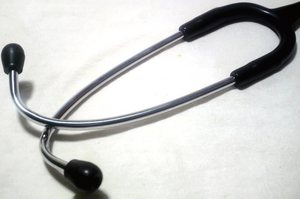Having two children, I’ve had the opportunity to spend more than my fair share of time in emergency rooms. They’d hurt themselves, or they’d develop serious medical problems and I had to get them help right away. Little did I know what would await me when I got there.
We all know about the terrible wait that we must endure in emergency rooms. In fact, it doesn’t seem that the emergency room staff regards our medical situations as an emergency at all, whenever we go there. They think that we can just be put on hold until somebody is available.
However, a new phenomenon has emerged that is a serious threat to the proper functioning of our emergency rooms. On several different occasions when I brought my child in for a legitimate emergency at the hospital, I found many people waiting ahead of me with their children, people who very clearly did not have an emergency. Despite the fact that these people were not in urgent need of care, I still had to wait since they were in line in front of me.
Once my child developed a phimosis on his penis. It was taut and cracking and causing him extreme pain. When we took him to the emergency room he was screaming, turning red and passing out from the pain. We really wanted and needed to get him immediate care. The other people ahead of us, mainly minorities, had children who didn’t even show signs of having the sniffles. None of them even looked sick.
I was forced to go to the nurses’ station several times to insist that my child be moved up in the queue. It was amazing what persistence it took to get them to treat my child’s condition with the urgency it required. I was told to wait several times, even though these nurses must have been aware that the other patients did not have an emergency. Emergency rooms are supposed to use the triage method to determine which patients have the most urgent conditions, but in practice they simply don’t use it. Instead, they far too often serve people on a first come, first served basis the same as any doctor’s office. I believe this form of emergency room abuse contributes to this problem.
According to my research, this is not a local phenomenon, but is experienced all across the United States. A report from the California Institute for County Government at California State University, Sacramento indicates that men and African Americans are more likely to go to the emergency room rather than a regular doctor or clinic for routine care. Latinos, Asian Americans and the elderly were less likely to engage in this behavior. Most of these abusers either lack insurance, are on Medicare or a state equivalent.
Not only does this habit disrupt the normal operation of the emergency room, and prevent people with legitimate emergencies from getting prompt care, it also disrupts our finances. Treatment in the emergency room costs around six times more than treatment in a doctor’s office. These costs are often passed on to state and local governments.
One solution is to require copayments for emergency room use. Studies showed that covered persons with a copayment for the emergency room used them 20 to 40 percent less than patients with no copayment. The visits for the most severe problems were not reduced, but visits for minor problems, which accounted for almost thirty percent of emergency room visits, were reduced by one third.
However, this doesn’t really address the problem of the uninsured misusing the emergency room. It also doesn’t really address the issue of Medicaid abuse. The truth of the matter is that emergency room abuse can constitute a form of fraud, and many people are lying or seriously misrepresenting their condition or the condition of their child in order to receive Medicaid benefits in the emergency room.
This form of emergency room abuse is driving up emergency room costs for all of us. Some action must be taken to stop people from using emergency rooms in an inappropriate manner. Unfortunately, copays and prosecution aren’t going to solve this problem. There simply needs to be a way for the poor and uninsured to get medical care.
Other countries have socialized medical care. For example, the UK medical system, National Health Service, does not bill medical services directly to the patient or insurance company. Instead, most medical costs are met by taxation. Patients are only billed for optical services, prescriptions and dentistry. For most British citizens, the majority of healthcare is free. In Britain there is no slamming patients with enormous bills, passing on costs from other patients who couldn’t pay, or applying unnecessary treatments or procedures in order to bilk insurance companies. The NHS Primary Care Trusts are expected to break even. There is no demand that they make a profit; they just shouldn’t lose any money.
In America we desperately need a socialized medical system such as this. In my opinion, it’s long overdue. England developed their system just after the second World War. Somehow, we missed the boat on this issue. And as a result, our medical system is sick and dying. It places a financial burden on the people who can least afford it, and the structures of our system encourages abuse of the system.
Uncredited, “Report highlights emergency room abuse.” Sacramento News. URL: (http://www.csus.edu/news/090104reportHilight.stm)
Joe V. Selby, “Patient Copayments Reduce Emergency Room Abuse.” NCPA. URL: (http://www.ncpa.org/w/w38/w38c.html)
Uncredited, “National Health Service.” Wikipedia. URL: (http://en.wikipedia.org/wiki/National_Health_Service)




